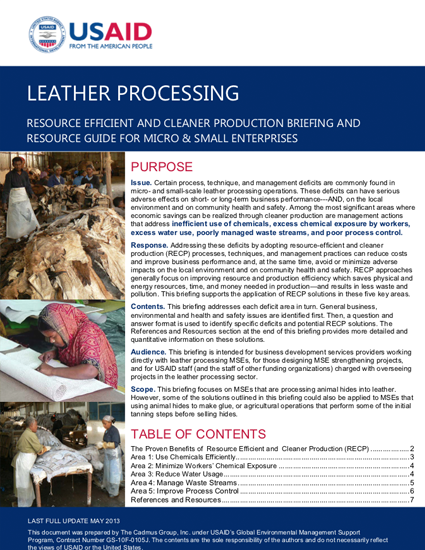Speeches Shim
Issue. Certain process, technique, and management deficits are commonly found in micro- and small-scale leather processing operations. These deficits can have serious adverse effects on short- or long-term business performance---AND, on the local environment and on community health and safety. Among the most significant areas where economic savings can be realized through cleaner production are management actions that address inefficient use of chemicals, excess chemical exposure by workers, excess water use, poorly managed waste streams, and poor process control.
Response. Addressing these deficits by adopting resource-efficient and cleaner production (RECP) processes, techniques, and management practices can reduce costs and improve business performance and, at the same time, avoid or minimize adverse impacts on the local environment and on community health and safety. RECP approaches generally focus on improving resource and production efficiency which saves physical and energy resources, time, and money needed in production—and results in less waste and pollution. This briefing supports the application of RECP solutions in these five key areas.
Contents. This briefing addresses each deficit area in turn. General business, environmental and health and safety issues are identified first. Then, a question and answer format is used to identify specific deficits and potential RECP solutions. The References and Resources section at the end of this briefing provides more detailed and quantitative information on these solutions.
Audience. This briefing is intended for business development services providers working directly with leather processing MSEs, for those designing MSE strengthening projects, and for USAID staff (and the staff of other funding organizations) charged with overseeing projects in the leather processing sector.
Scope. This briefing focuses on MSEs that are processing animal hides into leather. However, some of the solutions outlined in this briefing could also be applied to MSEs that using animal hides to make glue, or agricultural operations that perform some of the initial tanning steps before selling hides.


Comment
Make a general inquiry or suggest an improvement.